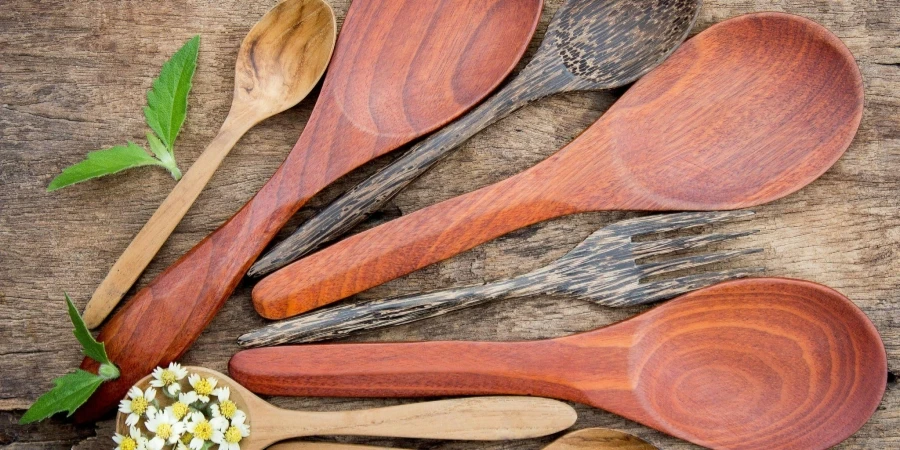Table of Contents
● Introduction
● Main types and practical uses of wooden spoons
● Market overview and recent trends in wooden spoons
● Key factors to consider in choosing quality wooden spoons
● Top picks and features for 2025
● Conclusion
Introduction
Wooden spoons are a cornerstone of kitchens everywhere, prized for their versatility, durability, and timeless appeal. From stirring hearty soups to scraping delicate sauces, these tools offer unmatched functionality in various culinary tasks. Their natural material is gentle on cookware surfaces, making them ideal for all pots and pans, including nonstick. Beyond their practical uses, wooden spoons also bring warmth and rustic charm that suits traditional and modern kitchens. With the right choice, these simple utensils can handle years of rigorous use, offering an enduring combination of form and function that’s especially valuable in a professional cooking environment.
Main types and practical uses of wooden spoons
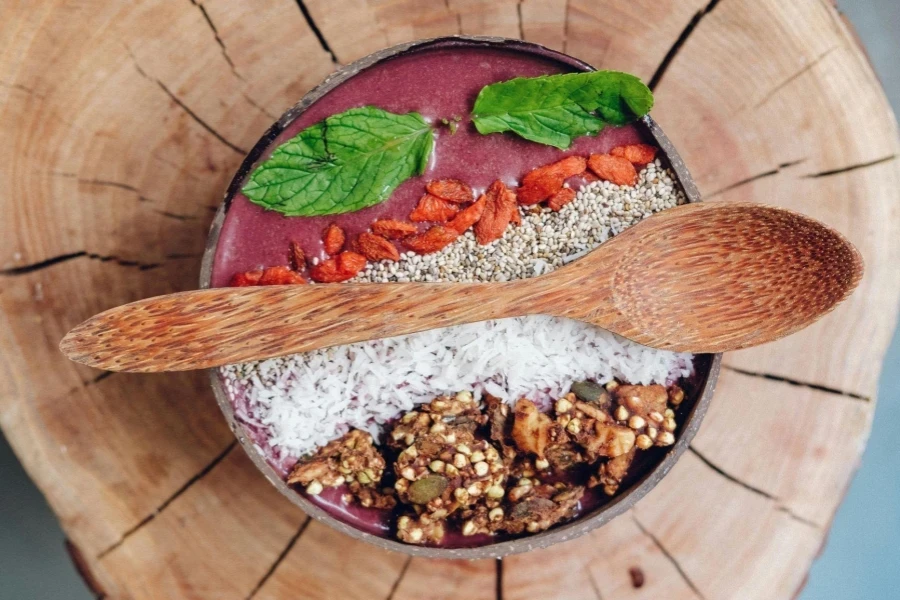
Classic stirring spoons: Classic stirring spoons are foundational tools in any kitchen, valued for their straightforward design and broad functionality. These spoons are typically crafted from dense hardwoods like beech, maple, or teak, which are ideal for stirring soups, sauces, and doughs. Their long handles and rounded bowls enable effective movement through thick mixtures without straining the hand. Designed to reach the bottoms of deep pots, classic stirring spoons are well-suited to tasks that require consistent, even stirring to prevent ingredients from settling or burning. These traditional spoons are often treated with food-safe oils, enhancing their longevity and providing a smooth, gentle finish on cookware.
Slotted and perforated spoons: Slotted wooden spoons introduce a versatile design for culinary tasks that involve separating solids from liquids. The slots or perforations allow fluids to drain efficiently, making these spoons ideal for scooping vegetables from boiling water or removing pasta from a pot without excess moisture. Slotted spoons are made from durable woods like olive or teak and hold up well against regular use in hot liquids. They’re particularly advantageous when dealing with delicate ingredients that require gentle handling, such as poached eggs or blanched vegetables. The design’s functionality makes it a preferred choice in kitchens for draining and serving tasks.
Scraping and mixing spoons: Wooden spoons with flat or angled edges offer unique functionality, particularly for grinding and mixing. These spoons are designed to clear food residues, or fond, from the bottoms and sides of pots and pans, which can enhance flavors in dishes like stews or risottos. Flat-edged wooden spoons are particularly effective with straight-sided cookware; they can reach corners and prevent ingredients from sticking or burning. For example, models with beveled or angled edges allow for more controlled scraping, which is valuable in deglazing pans or when making sauces that require consistent texture. Crafted from strong, water-resistant woods, these spoons are robust enough to handle thicker, stickier ingredients while maintaining a comfortable grip and balance for the user.
Market overview and recent trends in wooden spoons
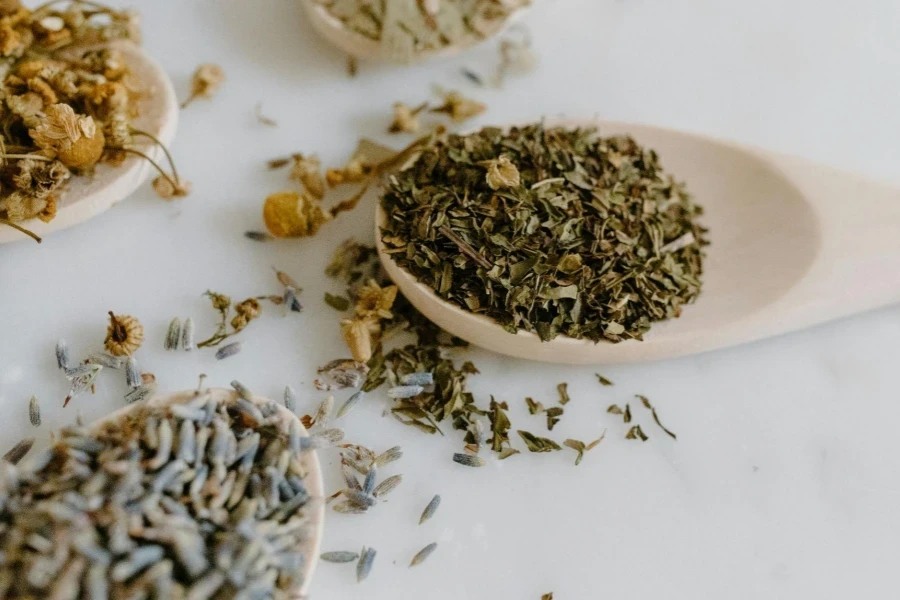
According to Cognitive Market Research, experts currently value the global wooden spoon market at USD 2.1 billion, with projections indicating growth to USD 3.1 billion by 2030. This market expansion is expected to occur at a compound annual growth rate.
3.1 Material Preferences in 2025
Material selection remains central to the appeal of wooden spoons, with a few specific woods standing out for their quality and performance. Teak, known for its high oil content, resists water damage and is naturally resistant to mold, making it an excellent choice for high-moisture cooking environments. Olivewood is admired for its unique grain patterns, which bring aesthetic appeal but require additional care to avoid surface roughening, as it is slightly less water-resistant than teak. Beechwood also remains a staple, valued for its lightweight and smooth texture, and it often features ergonomic spoon designs.
In addition to hardwoods, bamboo has seen rising popularity as an affordable and renewable option, although it may be more prone to drying and roughening over time. Each wood type offers unique benefits: olivewood spoons add a decorative touch to kitchens, while teak provides a rugged durability suitable for heavy use. With these materials catering to diverse functional and aesthetic needs, wood selection will continue to shape consumer preferences, especially as durability and ease of maintenance remain top considerations.
3.2 Functional designs and ergonomic trends
In recent years, there has been a notable shift toward ergonomic designs for wooden spoons, with manufacturers focusing on user comfort and efficiency. Spoons with rounded handles provide a comfortable grip and allow for multiple hand positions, which is ideal for prolonged stirring tasks. Thin, angled edges are also gaining popularity for their effectiveness in scraping pot bottoms, adding a layer of versatility for both home cooks and culinary professionals. This shift reflects a growing demand for kitchen tools that support ease of use without sacrificing functionality.
The depth and shape of spoon heads are also evolving. Deep-bowled spoons are favored for stirring and serving soups or stews, while flat-headed spoons are preferred for scraping and folding tasks. Additionally, spoons with slightly tilted heads offer better leverage, making it easier to scoop or scrape efficiently. These design innovations make wooden spoons more adaptable to various cooking techniques, enhancing their value as multi-functional tools. Ergonomic enhancements, such as comfort grips and lightweight constructions, cater to both efficiency and ease, marking a trend that will likely continue into the coming years.
Key factors to consider in choosing quality wooden spoons
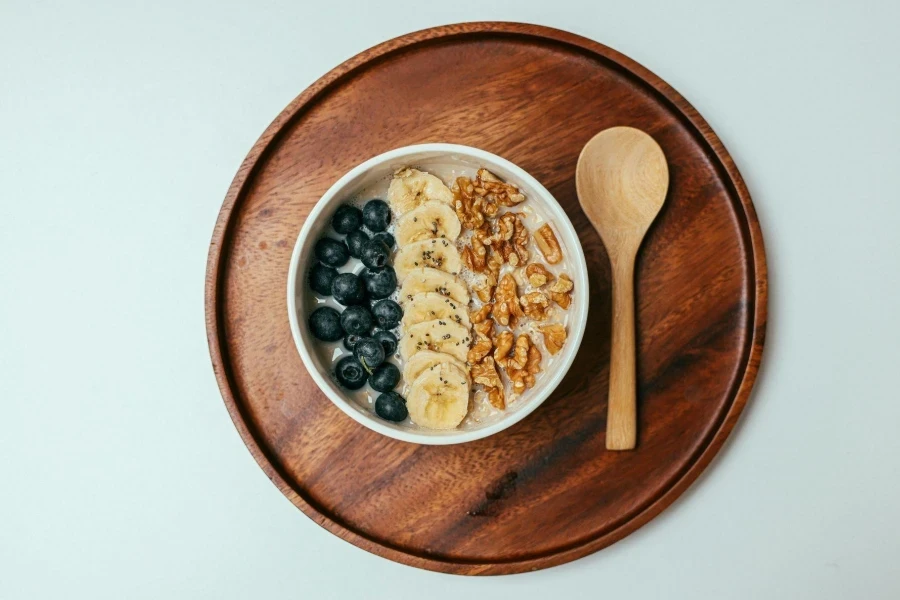
4.1 Material selection and wood type
Selecting the right wood is essential for ensuring that wooden spoons resist issues like splitting, warping, and cracking. Hardwoods like teak, beech, and maple are valued for their durability and water resistance; teak, for example, has a high natural oil content that enhances its moisture resistance and microbial protection, while beechwood offers a smooth texture and is lightweight. Olivewood is prized for its unique grain patterns and sturdy quality but may require regular oiling to maintain its smooth finish. Bamboo, although technically a grass, provides an affordable and sustainable option, though it tends to dry out faster than other hardwoods. Understanding each wood type’s specific qualities allows for selecting a spoon that will withstand frequent use and retain its shape and functionality over time.
4.2 Comfort and Handle Design
Handle design significantly affects a wooden spoon’s comfort and usability. Rounded handles are popular for extended stirring, providing a firm grip and minimizing hand fatigue. In contrast, flat or beveled handles offer more control for precision tasks, such as folding or scraping. Handle length is also crucial, with longer handles keeping hands safe from heat when working with deep pots. Some spoons incorporate ergonomic curves, adding comfort and control, especially during prolonged use. As handle shape, length, and thickness all impact a spoon’s functionality, carefully selecting these features ensures that the spoon will be well-suited to various cooking tasks and comfortable to handle.
4.3 Maintenance and care requirements
Proper care is vital for maintaining wooden spoons, as moisture can lead to cracking, warping, or bacterial buildup. Wooden spoons should be hand-washed with mild soap and dried thoroughly after each use to prevent moisture penetration, and they should never be placed in a dishwasher, as prolonged heat exposure can damage the wood’s surface. Periodic oiling with food-safe mineral oil or beeswax is recommended to maintain a smooth finish and water resistance, especially for more porous woods. Storing wooden spoons in a dry, well-ventilated area further protects them from unnecessary moisture, preserving their appearance and functionality for years.
Top picks and features for 2025
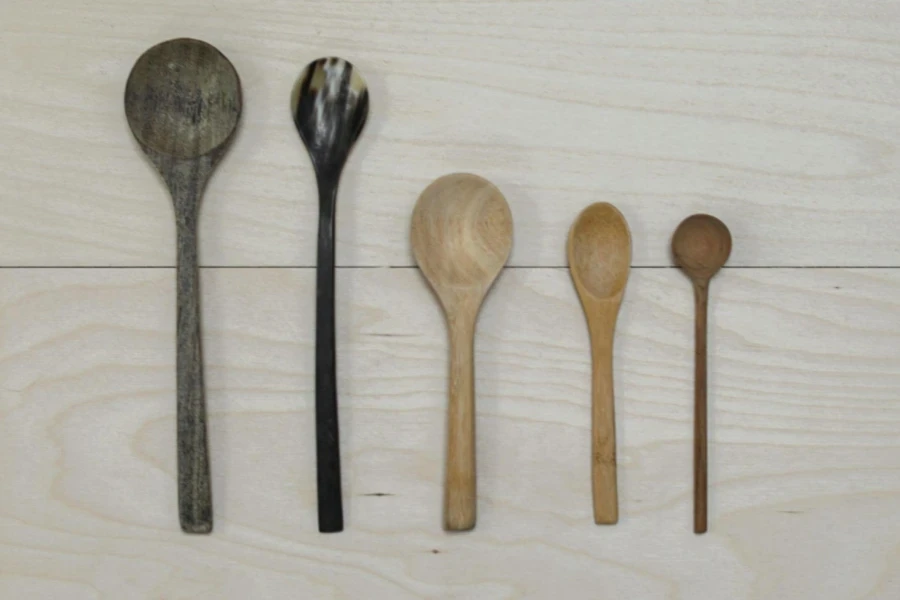
5.1 Top choices for quality and durability
Wooden spoons known for their quality and durability are essential for professional and home kitchens, and several high-performing options lead the market. Teak spoons, for instance, excel due to their natural resistance to water and staining, providing longevity even with frequent use. Olivewood is also popular, combining strength with aesthetic appeal, though it requires periodic oiling to maintain a smooth surface. Certain models with rounded heads and deep bowls allow for versatile usage, such as stirring thick stews or sauces without causing fatigue. Cherrywood options are also highly valued, blending flexibility with sturdy performance, particularly for mixing denser ingredients, ensuring they remain a mainstay in the market for quality-driven choices.
5.2 Versatile multi-use designs
Multi-use wooden spoon designs are popular for their flexibility and adaptability across cooking tasks. Spoons with angled heads or flat edges enhance their utility, making them suitable for scraping fond from pans or folding ingredients in baking. Some models incorporate slotted bodies, allowing liquids to drain during scooping, particularly useful when serving or draining vegetables. Deep, rounded bowls increase the versatility of these spoons by enabling larger servings. At the same time, curved or slightly tilted handles offer better leverage, increasing their efficiency in stirring or scooping tasks. Wooden spoons with these adaptable features are invaluable for kitchens, as they prioritize multi-functionality in their tools.
5.3 Aesthetic and premium picks
In addition to functionality, premium wooden spoons made from visually appealing materials like olivewood and cherrywood stand out for their elegance and unique grain patterns. Olivewood spoons, known for their distinctive, wavy grains, bring a touch of sophistication to table settings and are often chosen for their ornamental value as much as their practical uses. Cherrywood is also favored in premium designs due to its rich color and smooth finish, offering a refined look that complements various kitchen styles. These premium wooden spoons are frequently used for serving and presentation, bridging the gap between kitchenware and decor while maintaining the durability required for everyday cooking.
Conclusion
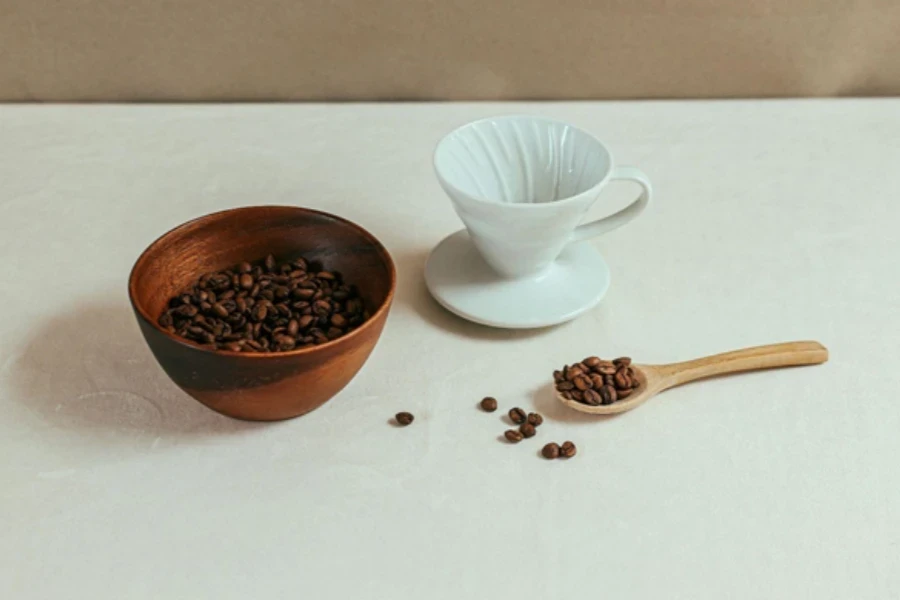
Choosing the right wooden spoon plays a significant role in enhancing culinary efficiency and satisfaction. These tools can handle diverse kitchen tasks by focusing on materials like durable teak or visually appealing olivewood, from stirring thick sauces to delicate scraping. Thoughtfully designed handles and bowl shapes further ensure comfort and functionality, making cooking more intuitive and enjoyable. Emphasizing sustainably sourced wood options adds value, meeting the growing demand for eco-conscious products. For 2025, durable and adaptable wooden spoons fulfill practical needs and contribute to a refined kitchen experience, appealing to both functional and aesthetic standards.
